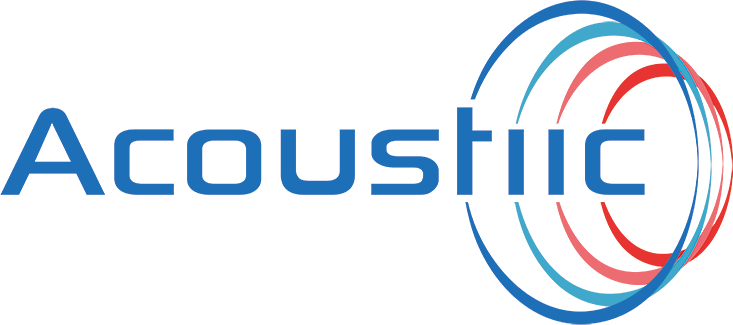Funded by the National Institute of Biomedical Imaging and Bioengineering, Acoustiic to allow early diagnosis and treatment of liver cancer to save lives

Bellevue, Washington – December 5, 2022 – Acoustiic, Inc., a healthcare company at the forefront of next-generation therapeutic ultrasound systems, has won a highly competitive Small Business Innovation and Research (SBIR) Grant from the National Institute of Biomedical Imaging and Bioengineering (NIBIB) at the National Institutes of Health (NIH) to develop a cost-effective and reliable method for liver cancer screening and monitoring. Acoustiic aims to integrate its emission plane electronics transducer technology within existing commercial imaging platforms to serve patients with specialized procedures in low-resource settings.
Liver cancer is one of the leading causes of cancer death worldwide and is expected to account for an increasing percentage of cancer deaths in the United States, with hepatocellular carcinoma accounting for approximately 80% of liver cancer cases. Improved ultrasonic tools for liver disease diagnosis and treatment monitoring using 3D shear wave elasticity imaging can save lives.
The outcome of this project is to enable simple, low-cost, rapid imaging of liver disease for diagnosis, and – most critically – monitoring during therapy through the use of 3D shear wave elasticity imaging (SWEI). There are currently no commercially available abdominal ultrasound transducers capable of 3D SWEI. Acoustiic’s technology would be the first of its kind and is envisioned for use in combination with Acoustiic’s planned non-invasive therapy system.
The grant will advance alongside the development of Acoustiic’s AgilitUS platform, an advanced ultrasound technology using volumetric high-intensity focused ultrasound to ablate cancer lesions non-invasively. Acoustiic has Breakthrough Device Designation from the Federal Drug Administration (FDA) for the ablation of liver and pancreatic tumors with focused ultrasound.
AgilitUS uses many thousands of tiny, individually-controlled speaker-like elements to focus heat-generating ultrasound waves on one focused point. The precision technology can cross through several layers of tissues. Whereas ionizing radiation damages all nearby cells, and chemotherapy damages cells all around the body, the goal of AgilitUS is an outpatient treatment with no incisions and no lifetime limits. AgilitUS has custom emission-plane electronics in the applicator, which require no robotics or moving parts, enhancing portability and accessibility.
The initial step will be the adaptation of its high-power 3D volume ultrasound therapy technology to a 3D SWEI transducer. This will ultimately facilitate real-time liver lesion monitoring throughout the entire liver volume via combined 3D B-mode imaging and 3D SWEI.
This work aims to address the limitations of current techniques, including 2D SWEI, by developing a high-power matrix array capable of wide field-of-view 3D SWEI imaging, with additional push capability that will enable rapid SWEI assessment of the full liver volume. This work funds the development of a first-of-its-kind 3D SWEI research prototype transducer, thereby enabling the full potential of 3D SWEI methods and applications in the management of liver lesions, including improved diagnostic, screening, and therapy monitoring capabilities.
This project has been funded in whole or in part with Federal funds from the National Institute of Biomedical Imaging and Bioengineering, National Institutes of Health, Department of Health and Human Services, under SBIR 1R43EB029880-01A1.
ABOUT ACOUSTIIC
Acoustiic, Inc., is a medical device company, developing novel high-element ultrasound arrays to create the platform technology for the future of medical therapy. In a typical configuration, thousands of individual transducers are orchestrated to focus ultrasound energy to a point within the target organ (much like a lens focusing the sun’s rays, but with the precision of a laser). This focus of energy can be used to destroy tissue, or at lower power to enhance drug delivery, elevate potency, or modulate the activity of neurons. It is this versatility that makes the technique unrivaled when compared to other methods. For more information, visit www.acoustiic.com.
